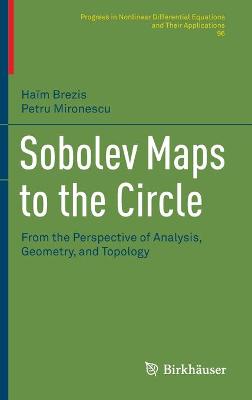Progress in Nonlinear Differential Equations and Their Applications
2 primary works
Book 13
The mathematics in this book apply directly to classical problems in superconductors, superfluids and liquid crystals. It should be of interest to mathematicians, physicists and engineers working on modern materials research. The text is concerned with the study in two dimensions of stationary solutions uE of a complex valued Ginzburg-Landau equation involving a small parameter E. Such problems are related to questions occuring in physics, such as phase transistion phenomena in superconductors and superfluids. The parameter E has a dimension of a length, which is usually small. Thus, it should be of interest to study the asymptotics as E tends to zero. One of the main results asserts that the limit u* of minimizers uE exists. Moreover, u* is smooth except at a finite number of points called defects or vortices in physics. The number of these defects is exactly the Brouwer degree - or winding number - of the boundary condition. Each singularity has degree one - or, as physicists would say, vortices are quantized. The singularities have infinite energy, but after removing the core energy we are led to a concept of finite renormalized energy.
The location of the singularities is completely determined by minimizing the renormalized energy among all possible configurations of defects. The limit u* can also be viewed as a geometrical object. It is a minimizing harmonic map into S1 with prescribed boundary condition g. Topological obstructions imply that every map u into S1 with u=g on the boundary must have infinite energy. Even though u* has infinite energy one can think of u* as having "less" infinite energy than any other map u with u=g on the boundary. The material presented in this book covers mostly recent and original results by the authors. It assumes a moderate knowledge of nonlinear functional analysis, partial differential equations and complex functions. It is designed for researchers and graduate students alike and can be used as a one-semester text.
The location of the singularities is completely determined by minimizing the renormalized energy among all possible configurations of defects. The limit u* can also be viewed as a geometrical object. It is a minimizing harmonic map into S1 with prescribed boundary condition g. Topological obstructions imply that every map u into S1 with u=g on the boundary must have infinite energy. Even though u* has infinite energy one can think of u* as having "less" infinite energy than any other map u with u=g on the boundary. The material presented in this book covers mostly recent and original results by the authors. It assumes a moderate knowledge of nonlinear functional analysis, partial differential equations and complex functions. It is designed for researchers and graduate students alike and can be used as a one-semester text.
Book 96
The theory of real-valued Sobolev functions is a classical part of analysis and has a wide range of applications in pure and applied mathematics. By contrast, the study of manifold-valued Sobolev maps is relatively new. The incentive to explore these spaces arose in the last forty years from geometry and physics. This monograph is the first to provide a unified, comprehensive treatment of Sobolev maps to the circle, presenting numerous results obtained by the authors and others. Many surprising connections to other areas of mathematics are explored, including the Monge-Kantorovich theory in optimal transport, items in geometric measure theory, Fourier series, and non-local functionals occurring, for example, as denoising filters in image processing. Numerous digressions provide a glimpse of the theory of sphere-valued Sobolev maps.
Each chapter focuses on a single topic and starts with a detailed overview, followed by the most significant results, and rather complete proofs. The "Complements and Open Problems" sections provide short introductions to various subsequent developments or related topics, and suggest newdirections of research. Historical perspectives and a comprehensive list of references close out each chapter. Topics covered include lifting, point and line singularities, minimal connections and minimal surfaces, uniqueness spaces, factorization, density, Dirichlet problems, trace theory, and gap phenomena.
Sobolev Maps to the Circle will appeal to mathematicians working in various areas, such as nonlinear analysis, PDEs, geometric analysis, minimal surfaces, optimal transport, and topology. It will also be of interest to physicists working on liquid crystals and the Ginzburg-Landau theory of superconductors.
Each chapter focuses on a single topic and starts with a detailed overview, followed by the most significant results, and rather complete proofs. The "Complements and Open Problems" sections provide short introductions to various subsequent developments or related topics, and suggest newdirections of research. Historical perspectives and a comprehensive list of references close out each chapter. Topics covered include lifting, point and line singularities, minimal connections and minimal surfaces, uniqueness spaces, factorization, density, Dirichlet problems, trace theory, and gap phenomena.
Sobolev Maps to the Circle will appeal to mathematicians working in various areas, such as nonlinear analysis, PDEs, geometric analysis, minimal surfaces, optimal transport, and topology. It will also be of interest to physicists working on liquid crystals and the Ginzburg-Landau theory of superconductors.

